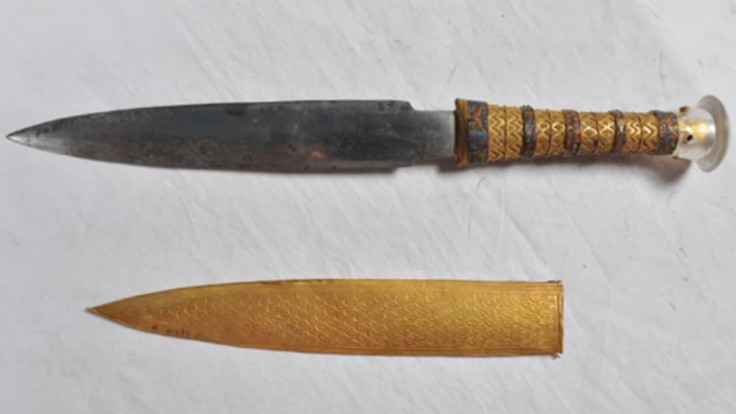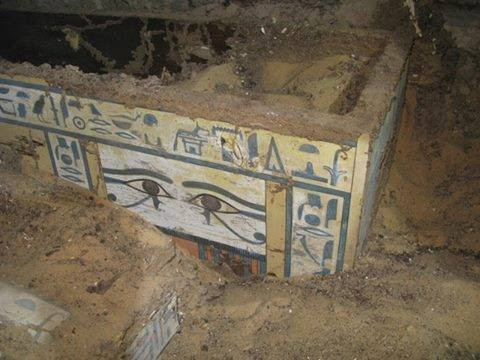Tutankhamun's secrets, mummies and meteorite dagger – what we learnt about Ancient Egypt in 2016
Uncertainties remain about whether Nefertiti is buried with Tutankhamun but the 'Lady Sattjeni' has been found.
It has been a busy year for historians and archaeologists who study the ancient Egyptian civilisation. Many exciting research projects have been taking place and a number of interesting discoveries have been made.
From secret chambers to hidden tattoos revealed on the skin of ancient mummies, IBTimes UK takes a look at the most important archaeological finds of the year.
Where is Nefertiti?
Where Queen Nefertiti was buried is perhaps one of Ancient Egypt's greatest enigma. High-profile research has been conducted this year inside the tomb of King Tutankhamun – her stepson – since archaeologists had suggested that it might contain hidden chambers. The hope was that her remains would be found in one of these rooms.
This hypothesis had been publicised by a controversial research paper published in 2015 by archaeologist Nicholas Reeves, who said that the tomb of the 18th-Dynasty pharaoh included two hidden doorways – one of which potentially covered the entrance to the final resting place of Nefertiti.
Since then, various analyses have been carried in the tomb using infrared scans and radar, but these tests have failed to convince all archaeologists of the need to drill the walls to uncover the tomb's secrets.
King Tut's 'meteorite dagger'
Tutankhamun also attracted the interest of scientists this year when a very mysterious dagger was found inside his tomb. Researchers used X-rays and fluorescence spectroscopy to analyse its composition and found a high nickel content and levels of cobalt that "strongly suggest an extraterrestrial origin". The complete findings were published in the journal Meteoritics & Planetary Science.

It had long been speculated that the ancient Egyptians used metal from meteorites to make objects, such as weapons. The analysis of the dagger recovered from King Tut's tomb thus strongly suggests that this was the case. However, the question of why Egyptians went through so much trouble, when there is a lot of iron on Earth, remained unanswered.
It is probable that these societies did not have the knowledge to extract iron from iron ores – rocks that contain the metal chemically bonded to other elements. Instead they may have found it easier to get metallic iron from meteorites which had fallen to the Earth.
Tattooed mummies revisit the role of women
One of the most original discoveries was about the role of women in ancient Egypt's religion. Scientists identified about 30 mysterious tattoos on a 3,000-year-old female mummy which had been found two years before.
Anne Austin and colleagues, from the French Institute of Oriental Archaeology, noticed sophisticated symbols printed on the neck of the deceased which she quickly realised were not simple drawings but tattoos. X-rays of the skin and infrared imaging revealed that many of these tattoos belonged to the sacred realm and represented wadjet eyes as well as cows – the symbol of goddess Hathor, one of the most important deity of ancient Egypt.

The findings suggest that the deceased woman was particularly religious and that she could have been a central figure of religious rituals. "This mummy is interesting because it comes from a period of ancient Egypt – the New Kingdom – when we thought there was a vacuum of religious power for women, that they were rarely if ever called priestesses. But this tattooed mummy challenges this view that women were losing influence in the religious sphere," Austin told IBTimes UK at the time.
Lady Sattjeni's coffin
Although Nefertiti has yet to be discovered, archaeologists found the remains of another powerful female who lived around 1800BC. Her coffin, made of cedarwood, was discovered at an ancient site on the bank of the Nile.
Referred to as Lady Sattjeni, she appears to have been a prominent figure during the 12th-Dynasty of the Middle Kingdom of Egypt. She was probably the daughter a governor of the Elephantine region, and then the wife of another, during the reign of Pharaoh Amenemhat III.

Her two sons, Heqaib III and Ameny-Seneb, also went on to become two key leaders of Elephantine. Because of the area's strategic position at the frontier between the Egyptian and the Nubian world, the role of Sattjeni's family may have been crucial for the extension of Egypt.
A 'primitive' machine
There was also a lot of talk this year about a documentary that was part of US Science Channel's series Unearthed. It suggested that the ancient Egyptians made sure that their kings' final rest was not troubled by tomb raiders by constructing primitive protective machines.
A digital model was recreated for the film, showing that some passageways inside the Great Pyramid of Giza remain relatively unprotected from looters, so ancient builders carved a series of grooves hidden beneath the walls of the pyramid. The idea was that granite blocks would then be dropped down the grooves, once the pharaoh was buried and his grave sealed.
© Copyright IBTimes 2025. All rights reserved.






















